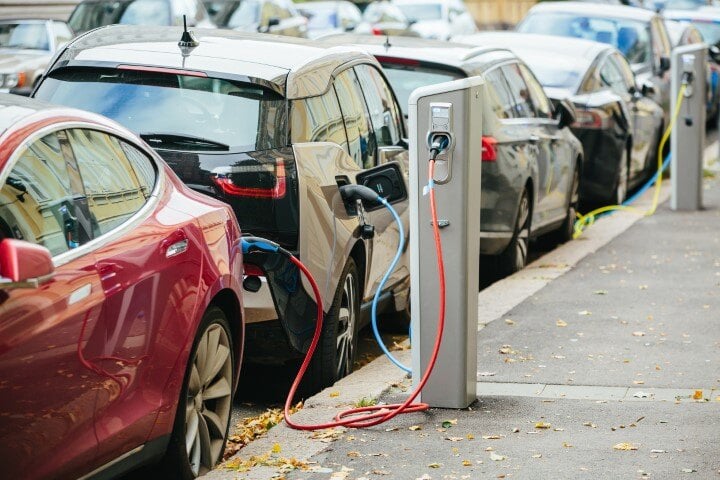Free Report: Ethanol Problems Facing Consumers
The Effects of Ethanol Gasoline Blends in Cars, Boats, and Small Engines The blending of ethanol into gasoline across the nation is now a common...

Our automobile landscape is about to undergo a fundamental shift that will forever transform it. We’ve seen tipping points before - points where something happened that forever changed our cars and trucks. One such recent happening was the introduction of the SUV a few decades ago. Those who got on board with it (Honda, Toyota, Hyundai) saw their business blossom. Those that missed the boat on them (Ford) really suffered - all because of how the SUV really changed the entire auto landscape in the US.
In twenty years, when we look back, 2023 may be recognized as another one of those tipping points. What are we talking about?
On April 12th, 2023, the EPA officially proposed new “mobile source” regulations that cover, among other things, new limits on tailpipe emissions for vehicles. The changes were rolled out in two separate proposed rules, one set for vehicles classified as light and medium duty and one applied to more than half of the many subcategories of heavy-duty highway vehicles. Due to their historic strictness, they’re expected to have a huge positive impact on both the environment and human health, while also forcing the auto industry to shift its car and truck offerings to the public at a historic level.
The EPA's mandate is to protect and improve the environment and human health. So anything that the EPA proposed to do must be shown to be covered by that mandate. As such, the EPA projects these tough new limits to have some pretty profound effects in those areas. In the course of trying to do this, these new rules will force other changes that, we think, are going to result in a transformation of the nation’s driving that we will never turn back from - a big transition away from gas- and diesel-powered engines to zero-emission electric (and hydrogen) vehicles. The country has been dabbling on the fringes of that shift for the past few years. This EPA proposal is going to basically shove the country forcefully towards a future of a lot more electric vehicles. Or some might say, drag the country kicking and screaming toward that.
After the rules were announced, almost everyone had something to say. Much of the discussion focused on characterizing this proposal as the EPA (or the EPA’s boss, the Biden Administration) mandating more electric vehicles. "The government telling me what to do." That’s not exactly what they’re doing here, so let's explain further.
These new targets from the EPA are centered on requiring dramatic reductions in the different kinds of tailpipe emissions that come from vehicles. Like the EPA’s fuel efficiency standards (sometimes called the "CAFE" standards), these limits are expressed as the average of the “fleet emissions” of the different types of vehicles made by each company. ‘Fleet’, in this context, refers to all the vehicles manufactured by a given automaker. Honda has a “fleet” of vehicle offerings comprised of small and medium cars like the Civic and Accord, SUVs like the Passport and Pilot, and other vehicles as well. All the models that Honda makes are its “fleet”. All the models made by Ford or Hyundai or Dodge, all of these are their respective fleets of vehicles. The gas mileage standards, and these emissions limits, apply to the average across all those different models, not each model individually. Some will be higher, some will be lower. But the average has to stay under the cap.
The significance of these new emissions limits stems from how drastic they are, along with the big changes they are going to force the auto industry to make in terms of what they can sell to the public.
In order to meet the new EPA rules, Honda (and other automakers) will have to decrease their average fleet CO2 emissions by an average of 13% per year every year between 2026 and 2032, until they are down to just 82 grams of CO2 per mile by 2032.
For perspective on how steep that drop is, compare that goal to the driving landscape right now. Cars and trucks are cleaner than ever before, and the average new vehicle in 2021 emitted 347 grams of CO2 per mile. With this proposal, every manufacturer has just nine model years to cut that all the way from 347 to 82 grams per mile.
It’s also not just carbon dioxide. There are other kinds of emissions targeted by the rule, all emissions that are bad for both air quality and human health. NOx, PM2.5 (the very small carbon particles from fuel that get way down deep into peoples’ lungs), VOCs, and SOx - these are also targeted for reduction of at least 50% by the new limits.
The new proposed standard build upon those and accelerate the cuts already mandated for the model years 2023 through 2026. By 2032, the US will have the most stringent tailpipe emissions limits for cars (which fall in the light and medium-duty category) in the entire world.
The reason this EPA proposal has been characterized as some kind of “Biden Administration EV mandate” is because it’s an open secret that in order to have any hope of meeting the requirements, automakers are going to have to sell many more EVs (and other zero-emissions vehicles) than they currently are. Some people view that as the government de-facto telling people what they have to buy.
The EPA proposal also covers some other areas relevant to electric vehicles in the realm of establishing battery and fuel cell durability monitoring and warranty requirements for EV vehicles. EV batteries will now have a minimum warranty period of at least 8 years and 80,000 miles. The rules will also require EVs to have onboard battery health monitors.
The first thing to understand is that while the proposals lay out the goals and limits in the different areas, they don’t mandate how the automakers are to reach those goals. That’s a good thing because it leaves them free to pursue their best options for how to implement the reduction targets.
The most clear takeaway is that a lot more zero-emissions vehicles will have to be made and sold. And remember, zero emissions don’t just mean electric vehicles alone. Hydrogen fuel cell technology is also under development. We think would be a great thing if these new rules force the accelerated development of that technology to the point where we see hydrogen fuel cells become a substantial part of the market.
It’s clear that only a big increase in zero-emission vehicles is going to get the automakers to meet these standards. The EPA knows this and they have their own projections on how EV sales might be increased as a result of this. If they’re right, by 2030, 54-60% of all new vehicles sold in the U.S. will be EVs. By 2032, it will be close to two-thirds. These would meet Biden’s goal of 50% of new car sales being EVs by 2030. And that’s just for light and medium-duty cars. EPA also estimates that 50% of heavy-duty “vocational” vehicles will be EVs by 2032.
Since the EPA has the mandate to push for things that improve the health of the environment around us, they provide such justification as part of their proposals here. EPA estimates that over the life of all these newly-composed vehicle fleets made up of zero-emissions vehicles, the stricter regulations will cut out nearly 10 billion tons of CO2 emissions. 10 billion tons is a meaningless number until we provide some context. It would be equivalent to twice the total US CO2 emissions for the entire year 2022. Even when you consider they’re talking about reductions over a 10-15 year period of vehicle life, it’s a historically substantial drop.
Fewer emissions are usually tied to reduced usage of fuel and petroleum. That means these cuts will also reduce America’s dependence on foreign oil by over 20 billion barrels over the course of the life of the vehicle fleets. Really, classifying it as reducing dependence on foreign oil is a bit of a misnomer because our national energy picture will always be made up of a max of domestic oil production and oil imported from other countries (remember, we import the most oil not from Saudi Arabia, but from Canada). The important thing here is that we’ll be using substantially less oil all around, no matter where we get it from.
The positive effects of all this won't just be seen in the environment. Remember, the EPA is charged with improving human health. A big reason why all these different emissions need to be cut is because they hurt human health. With these lower limits, the EPA projects that reducing petroleum emissions across the board (by having more vehicles that don’t create any) will not only affect greenhouse CO2 levels, but also dramatically affect fine particulate emissions that cause premature deaths, heart attacks, and respiratory and CV illnesses and asthma. Not to mention the health benefits of reducing NOx and VOC emissions, especially for the developing cardiovascular systems for children.
Positive effects on the environment and human health always translate into financial savings as well. As part of its proposal, the EPA ran cost-benefit analyses on the projected effects of the standards. EPA estimates the overall benefit for all of the positives of these standards will exceed costs by over $1 trillion.
But what about my pocketbook? Many of the informal arguments against electric vehicles seem to focus solely on considerations like “What’s it going to do to my electric bill?” The real truth rarely cited by people so opposed to electric cars is that EVs have lower maintenance and fuel costs than gas-powered cars and trucks. The next time you complain about the price of gas ($3.50? $4 a gallon? More?), think about what it would be like if you never had to pay for gas again. Or pay for oil changes or transmission maintenance - EVs don’t need either of those. Translating them into a cost-per-mile basis, electric vehicles cost about 20% to run vs. gas-powered cars. Not 20% less, but 20% - as in, one-fifth the cost. So if it costs you $50 to fill up your tank to go, say, 300 miles, it would only cost you $10 with an EV to do the same thing.
All in all, the EPA estimates that in switching to EVs, consumers will save an avg of $12,000 over the vehicle’s life.
Anticipating such a historic shift towards zero-emission EVs means there are going to be big effects on secondary areas like the manufacturing supply chain and also, very importantly, the nation’s power grid.
So many more electric vehicles mean so much more manufacturing capacity to build, especially for batteries. To make this happen, they’re going to need to build a lot more places to make these, which will create competition for the sites where these facilities will be located (because of new tax revenues and new jobs for the local areas).
And yes, they are going to need to solve the rare earth minerals problem with the batteries.
The other big elephant in the room is the power grid. When you have 60% of new car sales being electric vehicles, you’re going to need a much bigger network of fast EV chargers. Because not only do you have to give people places to do that, you can’t have people waiting 20 minutes for a pop to "fill up" their electric vehicles. But they're working on all that. The Inflation Reduction Act already set some of those wheels in motion with respect to setting aside funding ($120 billion). But we only have 120,000 charging stations currently, though that’s 40% more than we had a couple of years ago. We would expect to see major movements in the next 4-5 years on that front as we move towards the Biden Administration's goal of having at least 500,000 charging stations across the country. We only have about 150,000 gas stations, to give you some perspective on what that's likely to look like from an availability standpoint.
To recap, the Environmental Protection Agency, a federal agency tasked with protecting the environment and human health, issued a set of wide-ranging proposals to dramatically lower the amount of harmful emissions vehicles can emit. What happens now? Who is allowed to do what?
Whenever something like this happens - a federal agency proposing new rules - they don’t become “law” immediately. What happens next is that these proposals will be put out for public comment for a period of 60 days. That has to happen by law. No doubt the volume of public comments will be huge. It’s also very likely someone will take the opportunity during that period to file a challenge to the proposed limits in Federal Court. The Court might put a stay on the limits or they might not - it depends on what’s being argued.
In the absence of things like that happening that would delay implementation, the changes would be finalized after the 60-day comment period and would be written in the Code of Federal Regulations. The final rules are supposed to be in place by December of this year (2023).

The Effects of Ethanol Gasoline Blends in Cars, Boats, and Small Engines The blending of ethanol into gasoline across the nation is now a common...

The new higher gas mileage requirements for cars and trucks that we mentioned on the Bell Blog a couple of months ago are now the law of the land....

Back in 1975, if you bought a new car, you could expect its mileage rating to be about 13 mpg. And you were happy to have it, because you didn’t care...